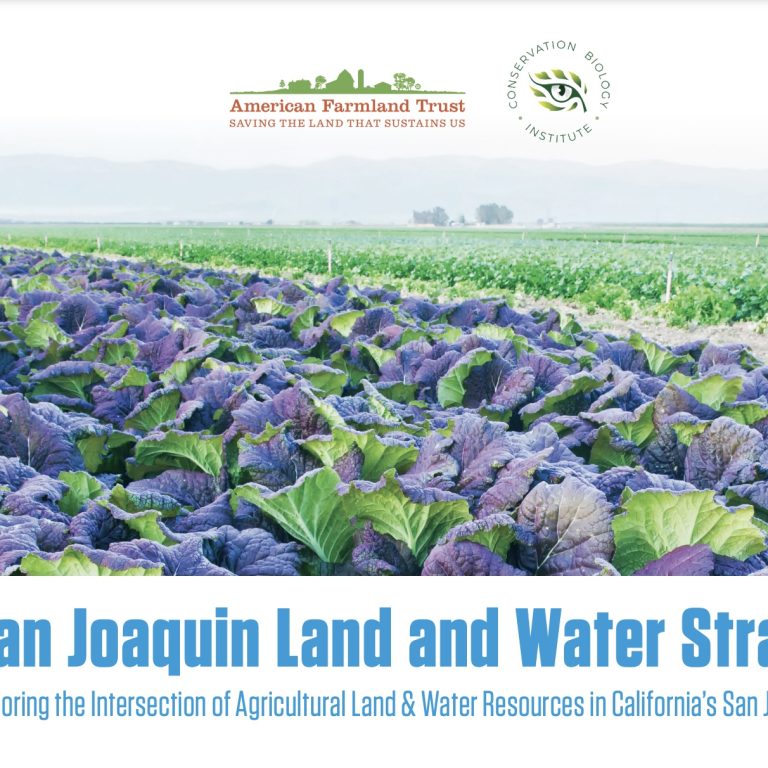Water scarcity, a changing climate, new regulations, and a growing population are just some of the challenges facing farmers and farmland in the San Joaquin Valley, California’s largest agricultural region.
To protect the most important farmland and water supplies in the region, American Farmland Trust (AFT) and Conservation Biology Institute (CBI) analyzed the distribution, quality, and future impacts to the region’s farmland and water resources.
This analysis led to several conclusions:
1. High-quality farmland (more productive, versatile, and resilient) with a reliable water source is very limited. Only nine percent of the roughly six million acres of irrigated farmland in the San Joaquin Valley is high quality and experiencing low-water stress.
2. As many as 323,000 acres are projected to be converted into low-density urban and rural residential uses by 2050 in the San Joaquin Valley, mostly around cities. Fifty-five percent of agricultural land that has a high risk of development is high-quality farmland. Exploring the Intersection of Agricultural Land & Water Resources in California’s San Joaquin Valley San Joaquin Land and Water Strategy
3. Due to a variety of factors, water demand could increase by 600,000 acre-feet per year by mid-century. 4. Groundwater regulations and proposed streamflow regulations are likely to reduce the amount of water available for farming. Thirteen percent of all agricultural water in the valley comes from overdrafted groundwater sources. Owing to increased evapotranspiration, irrigation water may need to be augmented by 3.6 to 7.9 percent in various parts of the San Joaquin Valley between now and mid-century.
The findings of the study require further action to protect the San Joaquin Valley’s best farmland and water supplies. In response, AFT is launching a multi-year program in partnership with willing farmers and ranchers to identify high-priority conservation easements and projects that promote groundwater recharge.
In addition, AFT will continue its long-term commitment to advocating for local land use policies that drive smart growth and preserve the San Joaquin Valley’s regional agriculture and natural resources.
To see the data from the project on the San Joaquin Valley Gateway click this link: San Joaquin Land Water Strategy.



